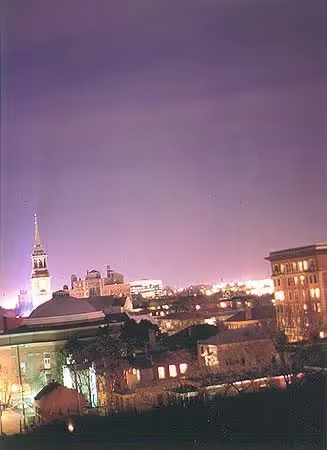A biweekly newsletter with public space news, resources, and opportunities.
A curated dispatch on all things public markets plus the latest announcements from the Market Cities Program.
Please note that these Hall of Shame nominations were written in a moment in time (most over a decade ago) and likely have since changed or even been transformed. If the above entry is now great, or still not so great, go ahead and comment below on how it has evolved or nominate it as a great place.

A residential district/neighborhood that remains largely unchanged from the pre-automobile era.

The Fan is the largest cohesive neighborhood of Victorian houses dating to the early 20th century in the country, and easily one of the most beautiful. The neighborhood gets its name from the fan-like way it stretches out from the city center to the city's suburbs in the west, incorporating scores of shady blocks. The Fan has undergone gentrification in recent years, attracting more affluent residents to renovate old homes with painstaking attention to detail, but allowing the neighborhood to retain its charm. The Fan works as an urban space because it remains largely unchanged from the pre-automobile era, making it pedestrian-friendly, and it has been zoned to allow small restaurants, bars, cafes and shops to sprout up everywhere, creating a dynamic environment. Carytown, on the neighborhood's far southwestern edge, is the retail mecca, a smaller version of Washington's Georgetown without any of the commercial chain trappings. Small, locally owned businesses dominate, along with a gorgeously restored Victorian movie theater that shows films for $1.99 apiece. On the northern edge is Monument Ave., one of the most visually stunning streets in the country, featuring statues commemorating Civil War heroes (strictly Southern, of course) and a grassy strip down the middle perfect for jogging and an Easter parade in the spring.
The Fan has an active and vibrant neighborhood feel, which is helped by its layout. Narrow streets make walking more preferable to driving, and the grid-like structure draws people in and makes finding its features easy. Parks are spread throughout to fill triangular spaces created by dissecting avenues. The neighborhood is bound by two highways leading to downtown, which has helped it retain its cohesiveness and avert drivers who would normally come through en route to the city. Sidewalks are plentiful, but houses are not pushed back as in other cities. It's easy to sit on a front porch and watch life flow by under the leafy trees.
A visitor's first impression is usually of the stately mansions and gorgeous trees along the cobblestone Monument Avenue on the northside and the cohesiveness of the homes in the heart of the Fan, where people have paid particular attention to beautifying homes without changing the original architecture in significant ways. Gardens prevail throughout the district, and the streets are spotless. Parts of the neighborhood had been a little sketchy in years past, but crime is typically very low, what you would expect of any neighborhood in close proximity to a city center. The best part is the gentrification continues unabated, but has not yet attracted the retail chains that dominate other cities. Richmond's wealth is truly in its individuality -- the small book store owners and neighborhood cafes, the trendy shops in Carytown and the museums on the Boulevard, the main north-south access point.
All different age groups are present, from affluent Richmonders who have lived in the city all their lives to students who attend nearby Virginia Commonwealth University. Gender mixing is also good, and there are a number of gays and lesbians, although little racial mixing. The neighborhood has an inclusive feel; its residents are fiercely loyal to their cafes and restaurants of choice, many walk to them on Sunday mornings with their dogs and spend hours enjoying leisurely meals. The Fan is also used by runners, who enjoy the flat terrain and shady streets. There is something for everyone in the fan: jazz clubs, chic restaurants, ethnic food like Thai, Vietnamese and Mexican, college bars, historical sights like the Virginia Museum of Art and the statues on Monument Ave., gay bars and a gay-affiliated church, historic home tours, numerous schools for children, and parks for lazing in the sun or reading.
The Fan is definitely a source of pride for Richmonders, for all the reasons listed above. There are also community events, such as the Easter Parade, during which Monument Avenue becomes a promenade for people in their Easter finest, with food booths, an Easter hat decorating competition and arts and crafts. There are 10K runs on Monument Avenue, a watermelon festival in Carytown, a French film festival at the local movie theater, and much socializing in the park. I now live in the New York's East Village and I can attest that there seems to be a more neighborhood-type feeling in the Fan, where nearly all of the buildings are single-family units, or large mansions divided up into apartments for students. The streets are more pleasant, cleaner and more inviting; there is less traffic and more emphasis on livability and gentrification.

*Please note that these Hall of Shame nominations were written in a moment in time (most over a decade ago) and likely have since changed or even been transformed. If the above entry is now great, or still not so great, go ahead and comment below on how it has evolved or nominate it as a great place.